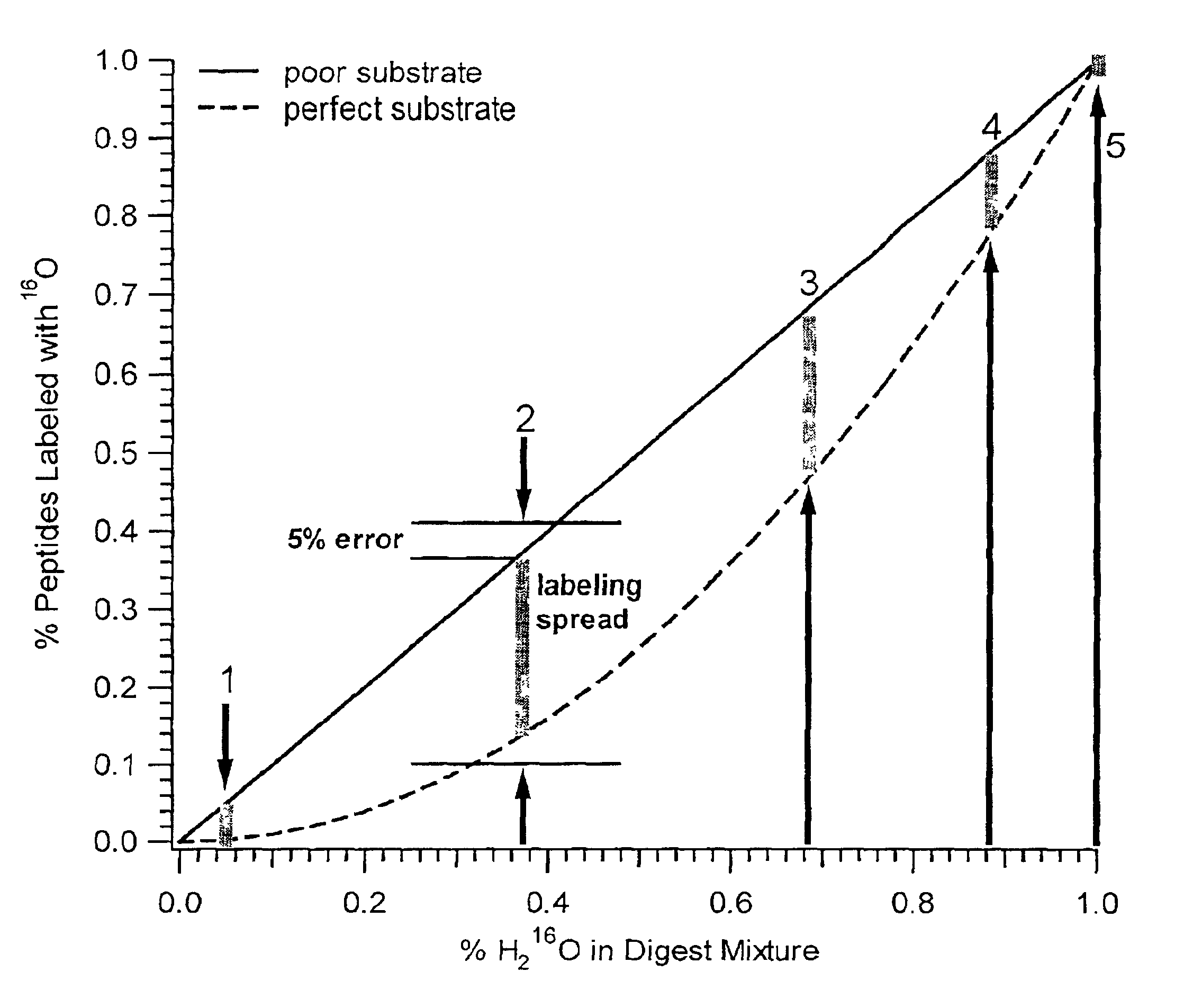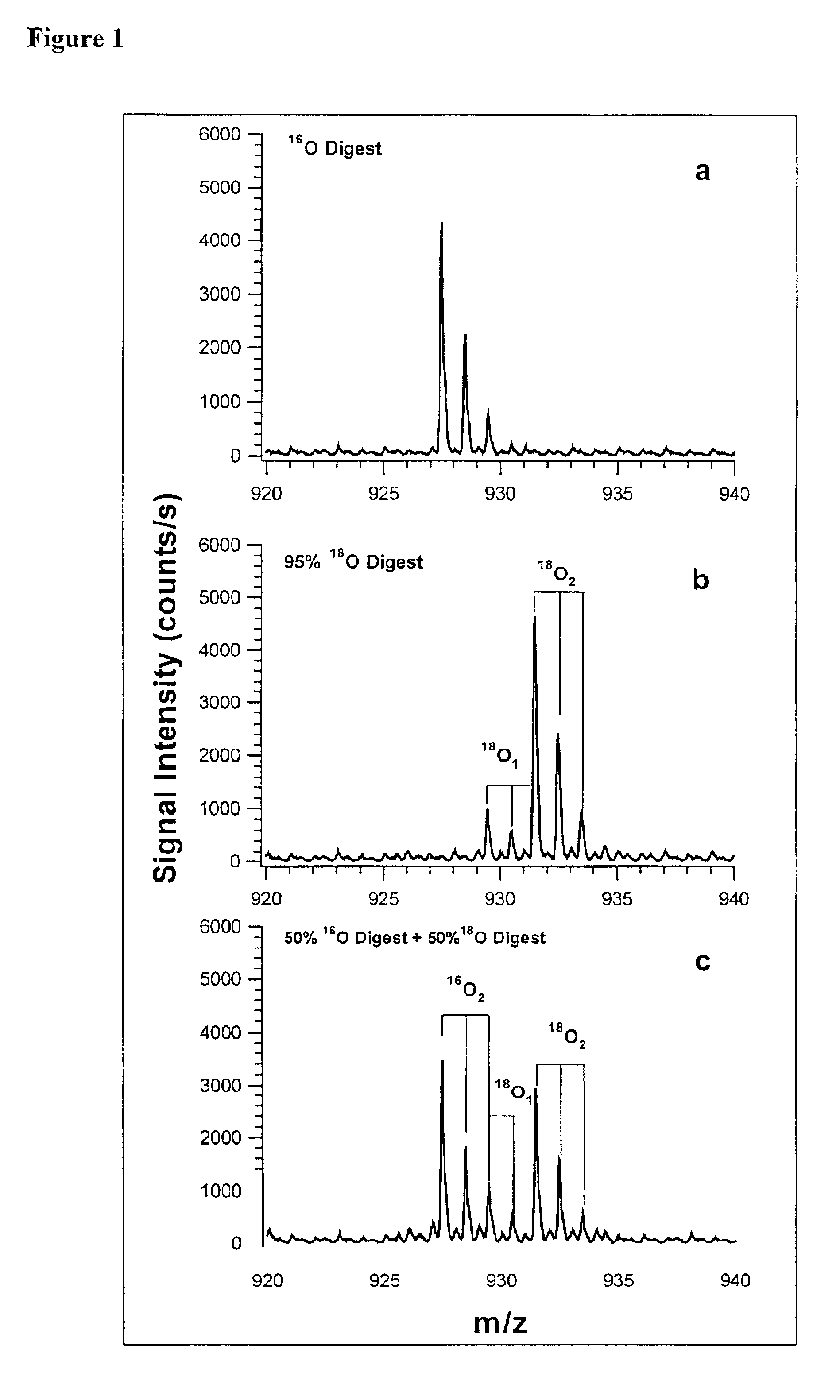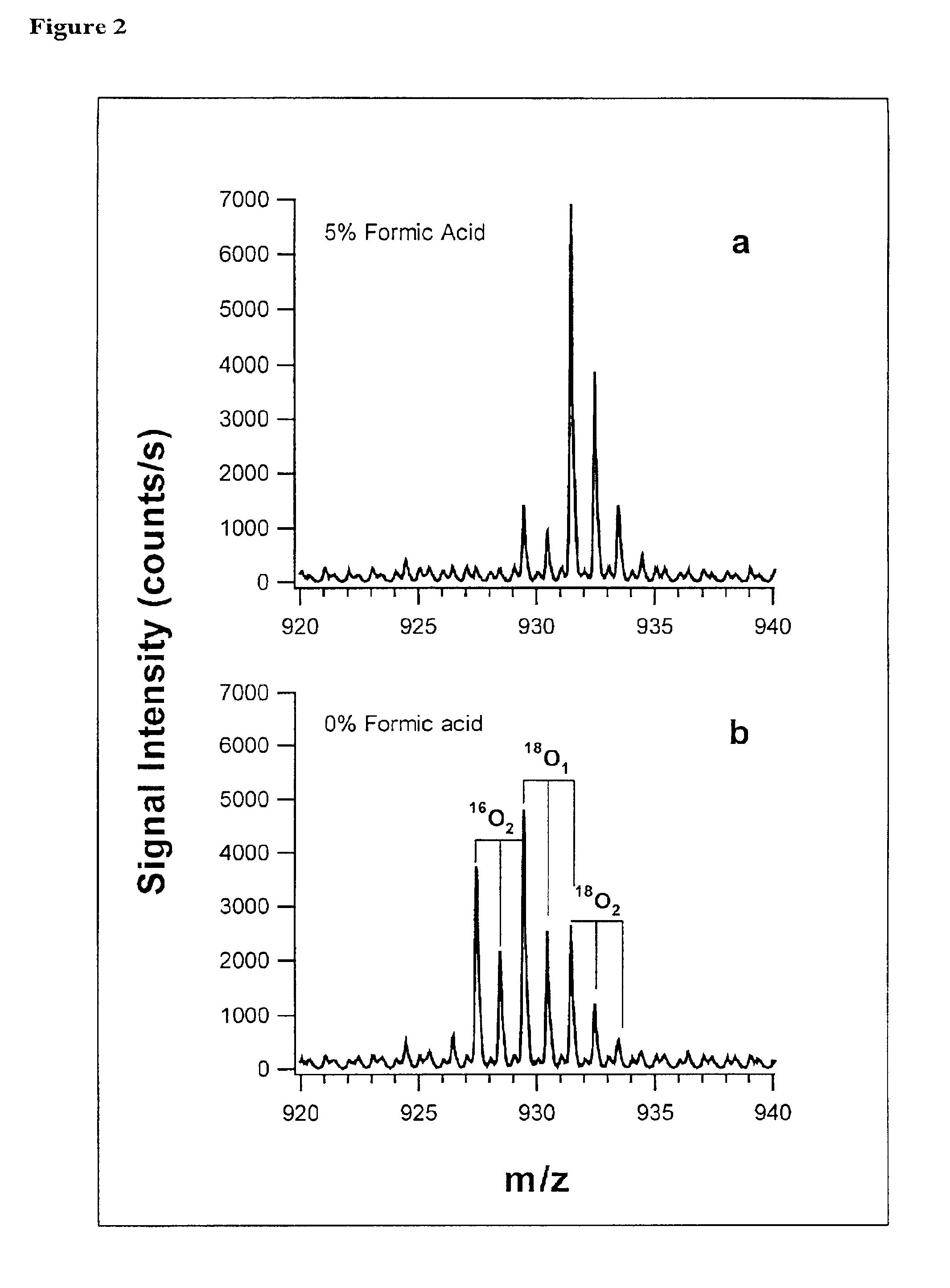Labeling of proteomic samples during proteolysis for quantitation and sample multiplexing
a proteolysis and labeling technology, applied in the field of labeling proteomic samples during proteolysis for quantitation and sample multiplexing, can solve the problems of pushing the limits of current analytical capabilities, the most significant challenge in quantification of a diverse array of protein expression, and the use of two-dimensional polyacrylamide gels (2d-page) even when coupled to mass spectrometry
- Summary
- Abstract
- Description
- Claims
- Application Information
AI Technical Summary
Benefits of technology
Problems solved by technology
Method used
Image
Examples
Embodiment Construction
In addition to quantification, the use of isotope dilution incorporating 18O labeling can be extended to diagnostic and encryption based applications to improve sample processing in proteomics. The labeling of peptides and the generation of stable standards is based upon enzymatic hydrolysis. The efficiency of labeling is therefore dependent on the activity of the enzyme (controlled by pH and time), the relative H218O content present in the digest buffer mixture in addition to the nature of the peptide products formed. Labeled standards appear stable and do not change appreciably under experimental conditions (pH 3-5) and over experimental time scales. A diagnostic evaluation of Ziptip preconcentration as a function of peptide concentration revealed that the relative recovery of peptides following preconcentration decreases as the absolute amount of peptides present in the original sample decreases. This suggests that at lower absolute amounts, Ziptip preconcentration may have only ...
PUM
| Property | Measurement | Unit |
|---|---|---|
| mass | aaaaa | aaaaa |
| volume | aaaaa | aaaaa |
| mass | aaaaa | aaaaa |
Abstract
Description
Claims
Application Information
 Login to View More
Login to View More - R&D
- Intellectual Property
- Life Sciences
- Materials
- Tech Scout
- Unparalleled Data Quality
- Higher Quality Content
- 60% Fewer Hallucinations
Browse by: Latest US Patents, China's latest patents, Technical Efficacy Thesaurus, Application Domain, Technology Topic, Popular Technical Reports.
© 2025 PatSnap. All rights reserved.Legal|Privacy policy|Modern Slavery Act Transparency Statement|Sitemap|About US| Contact US: help@patsnap.com



